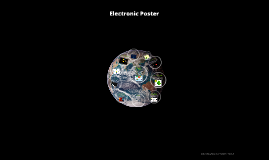Electronic Poster
Transcript: Why Study History? Industrialization lead to large changes in education and society. Industrialization and technology lead to urbanization which lead to development of social institutions such as charities, reform groups and governmental entities. Industrialization and urbanization lead to social division of labor, class conflict, and a need for a secondary education. (Rury,p 4-9) Cultural capitol-gaining status from knowing how to behave in certain situations Social Status -gaining status through association in a social group.. Human Capitol -- the ability of some groups to gain status through knowledge. Ideologies, such as racism and sexism, are beliefs and ideas; culture is patterns of behavior -- both affect relationship between culture and education. (rury p. 9-15) Urbanization lead to small rural schools being consolidated into larger schools. Industrialization lead to curricular differentiation. Education became an instrument to assign people to social roles. Education became a potent poltical issue. (Rury, p 17-18) In the 19th century schools were coeducational, providing boys and girls educational opportunityies. Female enrollment grew until girls outnumbered boys. Women also attended academies, high schools and colleges. These changes could have lead to first women's rights movement. After Civil War education of African Americans increased. An elite educated population could have contributed to effective challenges to racism and discrimination in 20th century. (Rury,p 19) Many people compare studying history to reading a story. One must remember that the story must be confirmed with facts gathered from the period of time being studied. New evidence will be uncovered making the ideas presented in Rury's book obsolete. Dates and names are presented not for memorizing but to help readers gain perspective. (Rury, p 21-22) Introduction: History, Social Change, and Education (Chapter 1) Angie Lakey-Campbell Educational Change: Historical Perspective Northwest Nazarene University History & Social Change The Evolution of American Education Thinking about Social Change Schools Changing Society Rury, J.L. (2005) Education and social change: Themes in the history of American schooling (3rd ed.). Mahwah, NJ: Lawrence Erlbaum Associates A Final Word About History References: We believe our time is unique Difficult to comprehend changes in present History offers perspective to understand change (Rury, p 2-4)

















